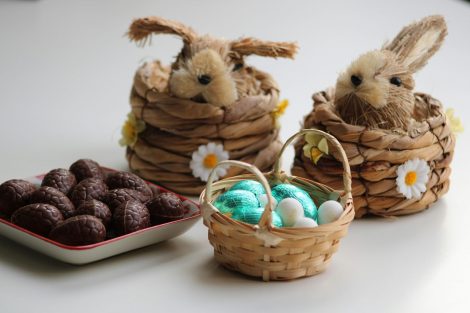Easter Toxicities for Pets: What to Watch Out For

Spring is officially here, and with it comes Easter—a time for sweet treats, beautiful flowers, and festive celebrations. However, while we enjoy the season’s delights, it’s crucial to remember that some traditional Easter items can be dangerous for our pets. To keep your furry friends safe, be mindful of these common Easter pet toxicities and take steps to prevent accidental poisoning.
Easter Toxicities for pets to Avoid
1. Daffodils
Daffodils may be a bright and cheerful symbol of spring, but they pose a serious risk to pets—especially dogs. Ingesting any part of the daffodil, including the bulb, stem, or even water from a vase containing the flowers, can cause symptoms such as vomiting, stomach upset, and excessive salivation. In severe cases, poisoning may lead to lethargy, difficulty walking, seizures, irregular heart rate, and changes in body temperature or blood pressure.
2. Tulips
Tulips contain toxins that can irritate a pet’s mouth and digestive system. Symptoms of tulip poisoning include drooling, vomiting, and diarrhea. While most cases are mild, severe reactions—such as breathing difficulties and heart problems—are possible. Be especially cautious with tulip bulbs, as they contain the highest concentration of toxins.
3. Spring Crocus vs. Autumn Crocus
Spring crocuses are generally considered low in toxicity, often causing only mild gastrointestinal upset if ingested. However, it’s essential to distinguish them from autumn crocuses, which bloom later in the year and are highly toxic. Autumn crocus poisoning can lead to severe vomiting, kidney and liver failure, and even bone marrow damage. If you have crocuses in your garden, ensure they are pet-safe varieties.
4. Hot Cross Buns
A staple Easter treat, hot cross buns contain dried fruits like raisins, sultanas, currants, and grapes, all of which are highly toxic to dogs. Even small amounts can lead to kidney failure, which can be fatal. Keep these festive baked goods out of reach, and be extra cautious when sharing food around pets.
5. Chocolate
Chocolate poisoning is one of the most common pet emergencies around Easter, thanks to the abundance of Easter eggs, chocolate bunnies, and candy. Chocolate contains theobromine, a chemical that is highly toxic to dogs, cats, and even rabbits. Symptoms of chocolate poisoning include restlessness, rapid breathing, increased heart rate, vomiting, and seizures. Dark chocolate and baking chocolate are particularly dangerous due to their high theobromine content.
Keeping Your Pets Safe This Easter
To ensure a happy and healthy holiday for everyone, follow these simple safety tips:
- Store Easter treats out of reach – Keep chocolates, hot cross buns, and other toxic foods in pet-proof containers.
- Be mindful of spring flowers – If you have daffodils, tulips, or crocuses, ensure they are placed where pets can’t access them.
- Supervise outdoor time – If your pet roams in the garden, keep an eye on them to prevent nibbling on plants or bulbs.
- Educate family and guests – Let visitors know about pet safety risks, especially if they are bringing Easter treats.
- Have a pet emergency plan – If you suspect your pet has ingested something toxic, contact your vet or an emergency pet poison helpline immediately.
By taking a few precautions, you can enjoy a fun and stress-free Easter while keeping your beloved pets safe. If you need professional pet services, pet care or advice, don’t hesitate to reach out—we’re here to help!
Happy Easter to you and your furry family members!


Join the conversation